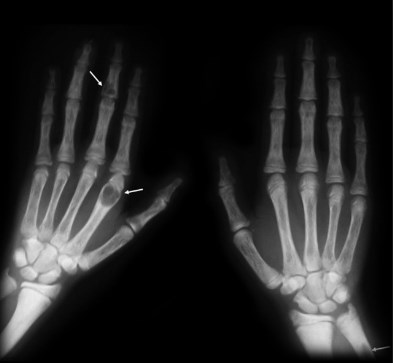Bone Cancer Causes And Symptoms
Bone cancer causes and symptoms - Bone cancer is a malignant tumor of the bone. There are also benign bottoms, which we call benign bone swelling. We also do not speak of bone cancer, when there are bones in the bones of another type of cancer. Bone cancer develops directly from bone tissue cells (bone or cartilage) or from the blood vessels or connective tissue cells located in the bone. In 2017, an estimated 3,260 people of all ages in the United States will be diagnosed with primary bone cancer.
Bone cancer occurs when bone cells go uncontrolled. Owing to the excessive growth of these cells, a tumor develops. This tumor prints and/or grows on the surrounding tissue. As bone cancer develops further, there is a chance of sowing. Malignant cells then spread through the blood vessel or the lymph node and nest elsewhere in the body. What causes bone cancer is often unclear. There are indications for a genetic plant that increases the risk of bone cancer.
The most common symptom of bone cancer is a pain, usually at the place where the tumor develops. This pain is sometimes vague and can become more severe at night. Sometimes there is a swelling in this place. Bone cancer in some cases also impedes the mobility of the joint.
Diagnosis of bone cancer
The diagnosis of bone cancer begins with a physical examination by the GP. In the presumption of bone cancer, he will send you to a specialist.
The specialist usually starts with an X-ray. The photo shows whether additional research is needed.
If there is a suspicion that it is a malignant tumor, an additional MRI study often takes place. During an MRI study, the bone cancer is identified.
Sometimes the doctor decides to make another CT scan of the bone. With a CT scan, you judge the quality of the bone.
After determining the exact location of the tumor, a puncture of the cancer is often required. With a hollow needle, cells are then taken out of the tumor to investigate whether they are malignant or benign.
If the tumor appears malignant then a further screening of the body is required to locate possible sores, thinking of a CT scan of the lungs.
Bone cancer occurs when bone cells go uncontrolled. Owing to the excessive growth of these cells, a tumor develops. This tumor prints and/or grows on the surrounding tissue. As bone cancer develops further, there is a chance of sowing. Malignant cells then spread through the blood vessel or the lymph node and nest elsewhere in the body. What causes bone cancer is often unclear. There are indications for a genetic plant that increases the risk of bone cancer.
The most common symptom of bone cancer is a pain, usually at the place where the tumor develops. This pain is sometimes vague and can become more severe at night. Sometimes there is a swelling in this place. Bone cancer in some cases also impedes the mobility of the joint.
Diagnosis of bone cancer
The diagnosis of bone cancer begins with a physical examination by the GP. In the presumption of bone cancer, he will send you to a specialist.
The specialist usually starts with an X-ray. The photo shows whether additional research is needed.
If there is a suspicion that it is a malignant tumor, an additional MRI study often takes place. During an MRI study, the bone cancer is identified.
Sometimes the doctor decides to make another CT scan of the bone. With a CT scan, you judge the quality of the bone.
After determining the exact location of the tumor, a puncture of the cancer is often required. With a hollow needle, cells are then taken out of the tumor to investigate whether they are malignant or benign.
If the tumor appears malignant then a further screening of the body is required to locate possible sores, thinking of a CT scan of the lungs.
*Image source : Wikimedia Commons
References :

Post a Comment for "Bone Cancer Causes And Symptoms"